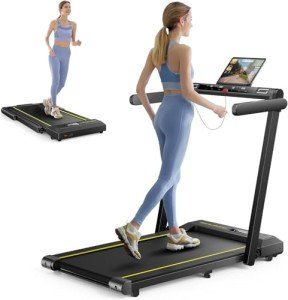What Is A Manual Treadmill?
In today's busy world, integrating fitness into day-to-day regimens has become essential. Amongst the myriad of exercise devices available, the manual treadmill sticks out for its simpleness, effectiveness, and cost. This blog post digs into what a manual treadmill is, its benefits, and how it compares to its motorized counterpart. We will likewise answer some regularly asked questions to assist you make an educated decision about adding a manual treadmill to your home gym.
What is a Manual Treadmill?
A manual treadmill, unlike a motorized version, is a self-powered machine that needs users to produce their own momentum. This means that the belt moves only when the user walks, jogs, or operates on the machine. Manual treadmills are usually lightweight and portable, making them an ideal option for home workouts, especially for those with minimal area.
Key Features of a Manual Treadmill
| Function | Description |
|---|---|
| Source of power | Powered by the user's motion; no electricity needed. |
| Weight and Size | Usually lighter and compact, enabling simple storage and mobility. |
| Cost | Usually more inexpensive compared to motorized treadmills, making them available for budget-conscious consumers. |
| Adjustability | Frequently features adjustable incline settings to increase workout intensity. |
| Durability | Designed with less electronic components, leading to lower risk of breakdowns and breakdowns. |
| Workout Variety | Enables various workout methods, consisting of walking, running, and sprinting, while providing resistance training through manual effort. |
Benefits of a Manual Treadmill
Manual treadmills included numerous unique benefits, appealing to a vast array of physical fitness enthusiasts. Here are some key advantages:
1. Cost-Effectiveness
Manual treadmills are typically much less pricey than their motorized counterparts. This cost makes them an attractive option for those seeking to invest in physical fitness devices without breaking the bank.
2. Space-Saving Design
Numerous manual treadmills are designed to be compact and lightweight, quickly fitting into little home or home health clubs. Their foldable styles likewise add to their space-saving abilities.
3. Improved Walking Form
Given that the user manages the treadmill, they can naturally change their walking or running gait. This self-regulation can assist improve total form, minimize injury threats, and enhance muscle engagement.
4. Strength Training
Utilizing a manual treadmill requires more effort from the user, causing increased calorie burn and much better muscle strength over time. Greater resistance settings can likewise promote cardiovascular endurance.
5. Versatility
Users can adjust exercise intensity by increasing speed or incline, permitting for a series of workouts from leisurely walks to high-intensity periods. This flexibility keeps workouts fresh and appealing.
6. Eco-Friendly
Manual treadmills do not require electricity, making them an eco-friendly choice. They promote sustainability, especially for those seeking to lower their carbon footprint.
Manual vs. Motorized Treadmill
While both manual and motorized treadmills have their own sets of benefits, they cater to various requirements. Below is a comparison table describing their essential distinctions:
| Aspect | Manual Treadmill | Motorized Treadmill |
|---|---|---|
| Source of power | User-generated | Electric |
| Cost | Generally less expensive | More expensive |
| Area Requirements | Compact and typically foldable | Larger, more fixed |
| User Control | Controls speed and momentum | Set speed, user adjusts incline |
| Consistent Resistance | Differs based upon user effort | Consistent resistance |
| Upkeep | Normally lower maintenance | Needs more maintenance and possible repair work |
In summary, a manual treadmill is a feasible option for those seeking a reliable and budget-friendly workout option. This self-powered devices supplies various advantages, including expense savings, portability, and a versatile workout experience. Provided its growing popularity, numerous people are now deciding for manual treadmills as part of their fitness regimens.
Frequently Asked Question About Manual Treadmills
1. Do I need to be a skilled runner to utilize a manual treadmill?
No, manual treadmills appropriate for all physical fitness levels. Novices may start with walking and slowly progress to running as they construct confidence and strength.
2. Can I find a manual treadmill with adjustable incline?
Yes, numerous manual treadmills come geared up with adjustable inclines, permitting users to increase workout intensity as required.
3. Just how much area do I require for a manual treadmill?
The size requirements differ, but many manual treadmills are created to be compact and can typically be kept in small spaces. Generally, an area of about 6 feet long and 2 feet large should be sufficient.
4. How can I securely use a manual treadmill?
To utilize a manual treadmill securely, guarantee that it is on a flat surface area, keep appropriate posture while walking or running, and start at a slow rate to get comfortable with the equipment before increasing speed.
5. What kind of maintenance does a manual treadmill need?
Manual treadmills need very little upkeep compared to motorized ones. Routine cleansing and looking for wear and tear will keep them in good condition.
6. Can I slim down using a manual treadmill?
Yes, utilizing a manual treadmill can aid with weight loss, as it burns calories through physical activity. Combining constant sessions with a well balanced diet can assist achieve weight-loss goals.
In conclusion, whether one is aiming to supplement their outdoor runs or seeking a convenient indoor workout option, a manual treadmill provides a reliable method to remain fit. By comprehending Non Electric Treadmill and benefits, people can make an educated choice that matches their physical fitness lifestyle.

